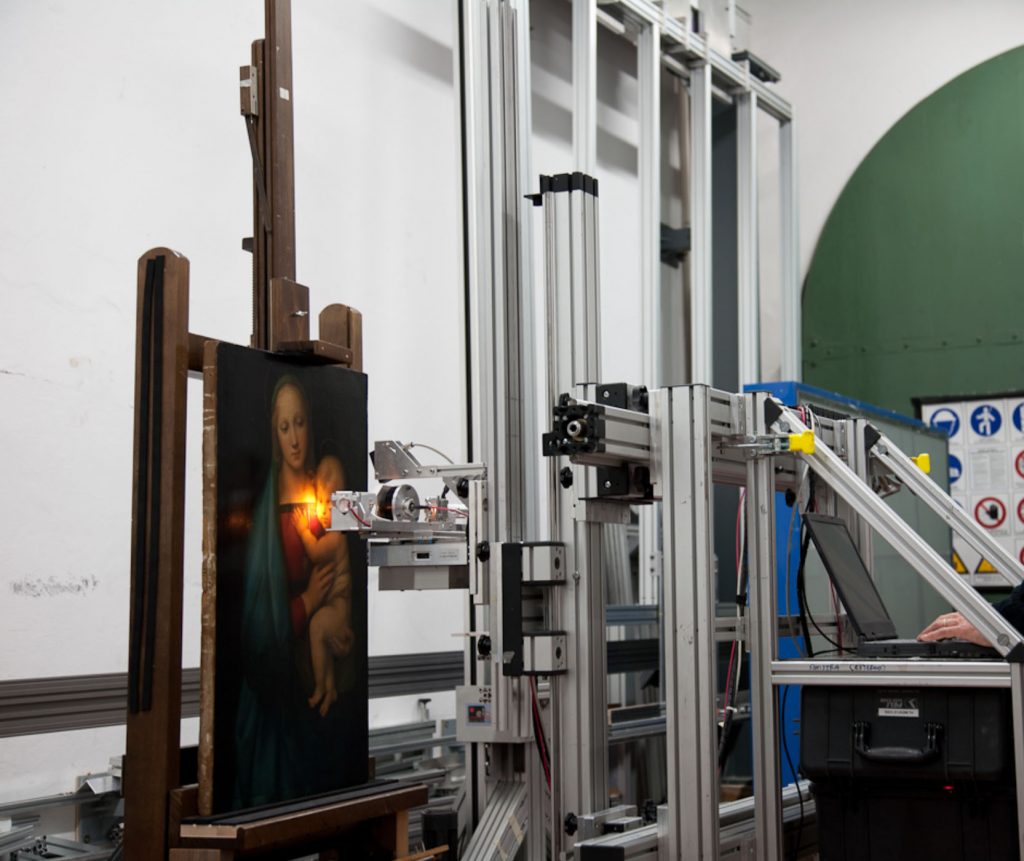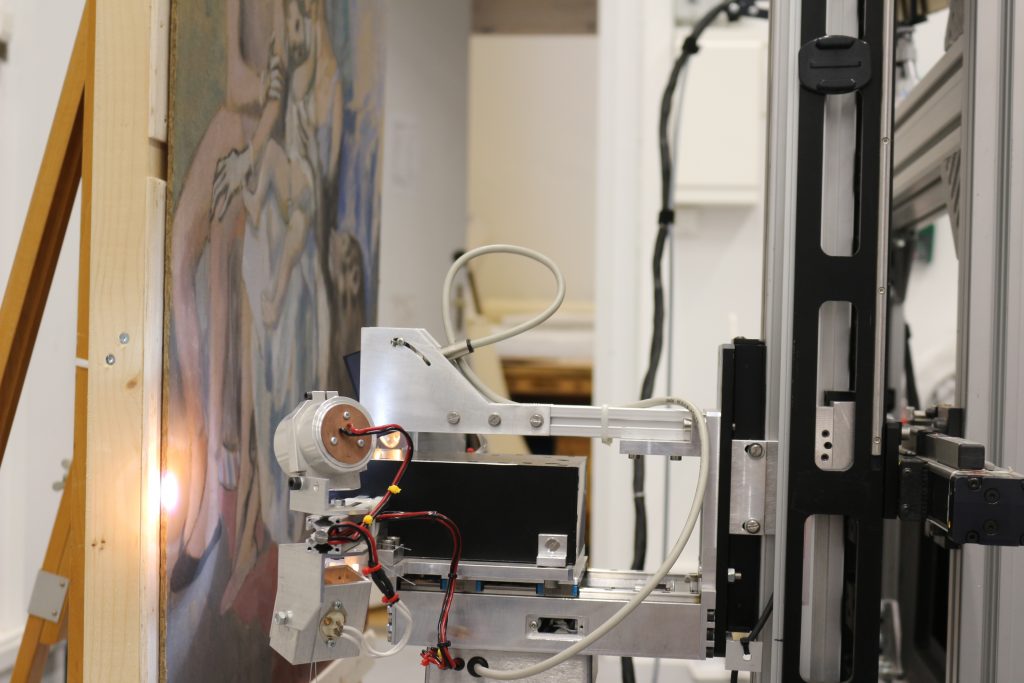Scanning VIS NIR
DESCRIPTION
Multispectral imaging analysis offers amazing possibilities for diagnosis and study of artworks. Depending on the radiation used (e.g., visible VIS, infrared IR), the reconstructed images may reveal information that cannot be retrieved from a simple observation of the object. Results obtained are of extraordinary importance not only for the documentation of the artwork’s conservation status, but also for its preservation and memory. In particular, VIS radiation allows for spectrophotometric characterization of the painted surface entailing colour variation analysis, which may turn definitely useful for restoration purposes – e.g. for monitoring colour changes due to either the cleaning or ageing. NIR radiation, thanks to the transparency of most pigments in this spectral region, enables the visualization of features underneath the painted surface, such as sketches of underdrawing, pentimenti and retouchings. The Multispectral Scanner is revolutionary in the field of VIS-NIR reflectography, as it provides a set of high-resolution images, simultaneously acquired at different wavelengths in a huge spectral region, ranging from 395 to 2500 nm. The stack of images, which are self-registered and aberration-free, facilitates the study of painting materials and hidden details, enabling to shed light on the artist’s technique and realization stages.
The multispectral scanner developed at CNR-INO is characterized by 32 spectral channels, 16 in the visible (395 – 765 nm) and 16 in the near-infrared range (750 – 2500 nm). The system is designed to guarantee safe measurement conditions, avoiding any damage to the analysed object. The XY scanning stages move jointly the lighting and the collecting systems, thus preventing the painting from extended light exposure. Furthermore, no contact between the optical head and the object’s surface is ensured by the laser-based autofocus system (mounted on the Z axis), which keeps the working distance at approximately 12 cm during the whole scanning. The boustrophedon movement of the scanning unit allows surveying areas up to 1 m2 in about 3 hours, with a spatial sampling of 250 μm (4 points/mm) and unitary magnification factor. The acquisition is regularly adjusted with certified standard references. The resulting image-cube is completely free of chromatic and optical aberrations, thanks to a catoptric system, which focuses the backscattered radiation on a bundle of 36 optical fibres. For each vertical scanning line, the distance-meter output is acquired and processed to generate real-time motion profiles, providing morphological information on the scanned surface, which can be displayed either as a 3D map or raking light image. The system is computer driven by a custom-made software, which controls simultaneously the axes movement, the autofocus data processing and the images acquisition. The instrument can be disassembled to be transferred and, once set up, covers a volume of 1.5 m3.
POTENTIAL RESULTS
Multispectral analysis is highly effective in providing information on pigments (i.e. identification and colorimetric coordinates) and in revealing concealed features underneath the painted surface, thanks to the two-fold face of the dataset (point-wise spectrometry and image-wise reflectography). The results can be used to study the realization technique, to support and monitor the restoration intervention, and to document the conservation status.
REFERENCE
A scanning device for VIS–NIR multispectral imaging of paintings, C Bonifazzi1, P Carcagnì2, R Fontana3, M Greco3, M Mastroianni3, M Materazzi3, E Pampaloni3, L Pezzati3 and D Bencini3 in Journal of Optics: Pure and Applied Optics, 2008, vol.10, 6, DOI 10.1088/1464-4258/10/6/064011

